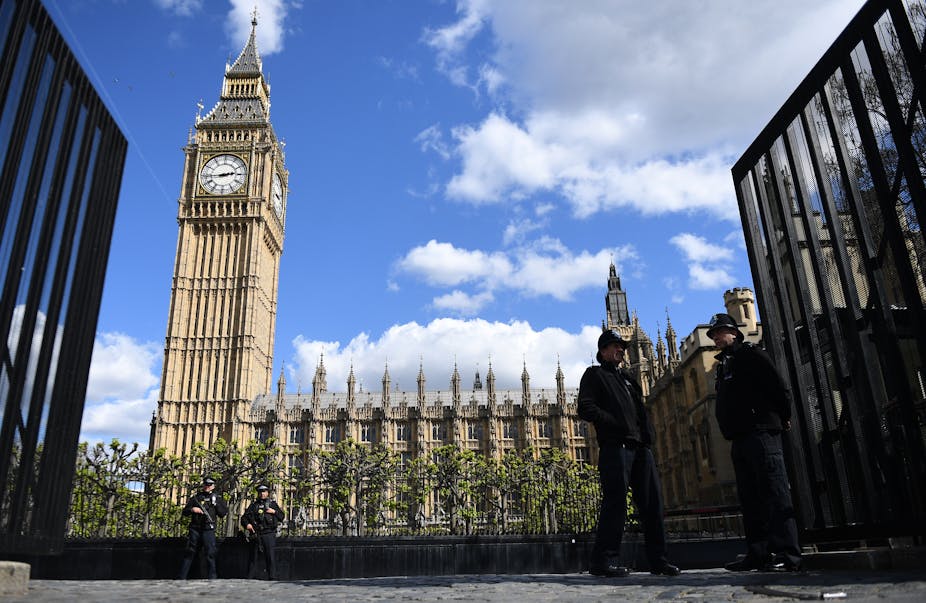Theresa May’s announcement, calling for a general election on June 8, 2017, caught virtually everyone by surprise.
May has repeatedly rejected calls for an early election since becoming leader of the Conservative party and prime minister, which made the timing extremely unexpected. She has argued since the beginning of her tenure that a general election during the Brexit negotiations would be inadvisable.
However, with opinion polls suggesting that the Conservative party can expect a resounding victory in a general election, it appears that the temptation to bring the vote forward was simply irresistible. The real question is who will be the winners and losers in this snap election – and who will survive to fight another day?
Conservatives on course for a big win
The obvious winner is Theresa May. The PM appears confident that she will not only win the election, but will increase her majority in the House of Commons. If that were not the case, why would she ask parliament to call a general election, cutting short the current term by three years? If she had concerns over her own ability to win, she would perhaps hold off on a general election and see if conditions improved. However, that is a dangerous strategy, as Jim Callaghan and Gordon Brown found to their cost.
Opinion polls have not always been accurate when tight contests have been held – as the EU referendum and the latest US presidential election exemplified. However, the enormity of the proposed gap between Labour and the Conservatives in these polls suggests that, even if the margin of victory is not accurate, the Conservative party will increase its majority.

That’s not to say it will be all plain sailing for May. She will have to ensure that Conservative voters believe she is a “safe pair of hands” for the Brexit negotiations. As May has suggested “Brexit means Brexit”, but that can mean different things to different voters.
The new intake of Conservative MPs that will come with an increased majority will help to determine how Brexit negotiations play out. Should the new MPs be on the right of the party, a hard Brexit will be the only acceptable outcome of EU negotiations. Should the new MPs be more centre-right figures, May will have more room to manoeuvre and will be less reliant on the right wing of her party. Beyond the traditional Tory heartlands, May will be hoping to pick up some voters from both the left and right. She will use Brexit to try and persuade disillusioned UKIP and Labour voters that she is their best and only hope for Britain.
Liberal Democrats rising from the ashes
Tim Farron, leader of the Liberal Democrats, appears to be delighted with the promise of a snap general election. His party was annihilated in the 2015 vote but the two years since have been a little kinder. The Liberal Democrats have performed well in council and parliamentary byelections, most notably in Richmond-upon-Thames, where they replaced Zac Goldsmith, the sitting Conservative MP, based on their pro-European message.

The party will inevitably increase its number of MPs, although it’s starting from a very low baseline. The message is clear – the Liberal Democrats support Britain’s continued membership of the single market – and that clear message will be easy for them to effectively communicate to the 48% of the British public who voted remain in June 2016.
Labour struggles with its message
The Labour party has a much more difficult message to push at the general election. Without a clear position on Brexit, the party has instead focused on domestic policy initiatives. These are much easier to sell to the electorate, and Labour will argue that a general election needs to be about more than Brexit.
Regardless of that, Brexit will dominate the campaign and Labour will struggle as a result. While Corbyn is loved by his supporters, and they hope for a surprise victory, all evidence suggests that simply won’t happen. Labour MPs are bracing themselves for the Corbyn effect. In many ways, Corbyn’s leadership is a symptom of Labour’s bigger illness – who are their electorate and how do they deal with the Blair legacy?
Labour’s stronghold in Scotland has been smashed by the SNP and many traditional Labour areas voted to leave the EU, contrary to the party’s official stance. Corbyn came in for much criticism after the referendum result, with his critics arguing his message was unclear and lukewarm. In light of this, how will Labour MPs, many of whom were Remainers, justify their stance to their local electorate? Will those voters conclude that the issue of Europe and Brexit is more or less important that their party loyalties or their traditional voting patterns?
SNP strength as a weakness
The SNP has a slightly different worry, in that it starts from a position of dominance. The party holds 56 of the 59 parliamentary seats in Scotland, so there are only marginal gains to be made – and even losses to be considered.

Sturgeon’s call for a second independence referendum will be tested in this election. Those who support the SNP but not independence may be concerned enough over another referendum to take their vote elsewhere. Alternatively, the pro-European Scottish public may want to ensure that their voice is heard clearly in Westminster. SNP candidates will suggest that only they can provide such a voice.
The coming weeks will be filled with political uncertainty, claim and counter claim. What is certain is that the political careers of May and Corbyn depend on their success. One of them will almost certainly be looking for another job on June 9. Who that is has yet to be decided.

